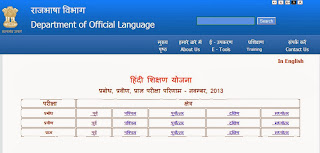संस्कृत एवं हिन्दी भाषा में प्रयुक्त देवनागरी लिपि विश्व की अन्य लिपियों से श्रेष्ठ क्यों है?
Why the Devnagari Hindi Script is Best among other all Scripts?
http://www.anu.edu.au/asianstudies/hindi/pronounce/velar.html
(To enlarge the above Chart please Double Click on it)
Do you know that the English Shorthand is based on Devnagri Script in which Hindi, Sanskrit & some other Languages are written? According to Ezek Pitman (Who invented the English Shorthand Phonetic codes) –“Devnagri Script is most scientific and Best among all international Scripts". Although it is quite difficult to believe, but it is absolutely true! Before considering the Devnagri (also known as Nagari) Script it would be useful to consider how the Roman Script (In which English and other European languages are written) is arranged.
There are26 ( twenty six ) letters in Roman alphabet, as used for writing English. Nobody knows why the beginning letter is “A” and final letter is “Z”. in fact all 26 letters (A-Z)in English language are arranged haphazardly. There is no principle behind the serial order of A,B,C,D, and so on. There are two main parts of Alphabets; these are “Vowels” & “Consonants”. As far as English is concerned, there are Five Vowels in its Alphabet namely-A,E,I,O &U. other than these sometimes “W” & “Y” also function as vowels. The rest 21 letters are called Consonants. They are neither arranged phonetically as in Devnagari Sript, nor are they groped accordingly to similarity of shape as in Urdu. Since consonants by themselves cannot be pronounced easily they either add a vowel at the end of the consonant or a vowel precedes the consonant. Thus in English B,C,D,G,P,T,V take a long “ee” after them and are pronounced as Bee,Cee,Dee……etc. As if afraid of such uniformity they add “ay” instead of “ee” after the consonants “K” &”J”, these being pronounced not “Kee” and “Jee”, but as “Kay” and “Jay”. Similarly “Q” takes a “u” after it, viz.-“Qu”.
The consonants in English Alphabet like F,L,M,N,S,X when pronounced by themselves take a short “e” before them. That is they are pronounced as “Ef”, “El”, “Em”, etc. strangely the aforesaid rules (if any!)are not followed in “R”. They pronounce the consonant “R” not as “Er” but as “Aar”. Here again as if to break any scientific uniformity “Z” is pronounced like “Zed”. The pronunciation of the consonant “H” does not contain the sound it represents! It is pronounced as “Ech”. But it is merely an aspirate (sometimes an aspirate of a).
Devnagari consonants when pronounced invariably take the sound of “a” after them. Nevertheless all Devnagari alphabets are arranged in most scientific way. All vowels are stand apart from consonants so that they can easily be recognized. They have been categorized in short and long vowels from too. Consonants are arranged in ascending way (Gutturals to Labials) so that what we pronounce first comes first. To understand the arrangement of Hindi consonants please look into the Chart given below-
To learn how the Hindi Devnagari Alphabets are pronounced, please click below the Link -http://www.anu.edu.au/asianstudies/hindi/pronounce/velar.html





टिप्पणियाँ
एक टिप्पणी भेजें